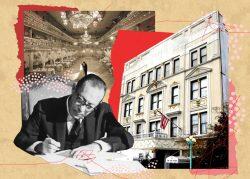The Landmarks Preservation Commission just made it easier to bring properties in New York’s historic districts up to speed with their climate needs.
The LPC approved amendments to the review process for alterations to landmarked buildings, Crain’s reported. The changes are limited to upgrades that could help increase climate resiliency, update necessary systems or expedite a permitting process.
Under the changes, owners and landlords will be able to bypass a full vote of the LPC to get approval for energy efficiency improvements, such as solar panel installations and HVAC system updates. The same applies to heating and ventilation of buildings, some of which may be outdated by contemporary standards and ordinances, such as Local Law 97.
Additionally, applicants will no longer need to submit a sworn statement to receive a certificate of no effect, needed for proposals that require permits from the Department of Buildings — a written statement will do.
The rule changes could make it more favorable for owners of historic properties to renovate a building’s specific needs, rather than demolish and start anew, a fate not reliably avoided by having landmark status.
“Landmarks-designated buildings can and should be climate resilient and energy efficient, and these rules will make it easier for building owners to achieve this common goal,” LPC chair Sarah Carroll said in a statement.
Read more



The changes could also accomplish dual goals. First, faster approval and lower costs to go through the review process could lead to further investment from owners in their properties, which could ultimately assist Mayor Eric Adams’ goal of adding 500,000 homes in the city in the next decade.
Additionally, it can help landmarked buildings avoid debilitating fines as a result of being out of compliance with Local Law 97, which comes into effect next year. Owners of buildings of at least 25,000 square feet must reduce emissions 40 percent by 2030 and 80 percent by 2050, or else face hefty fines.
— Holden Walter-Warner




